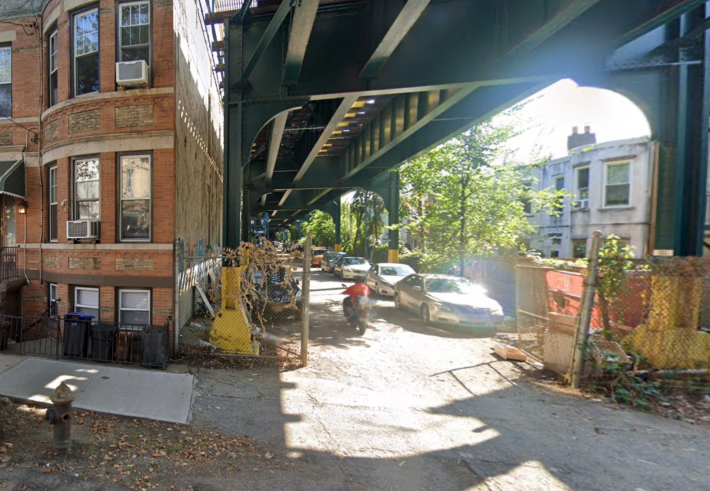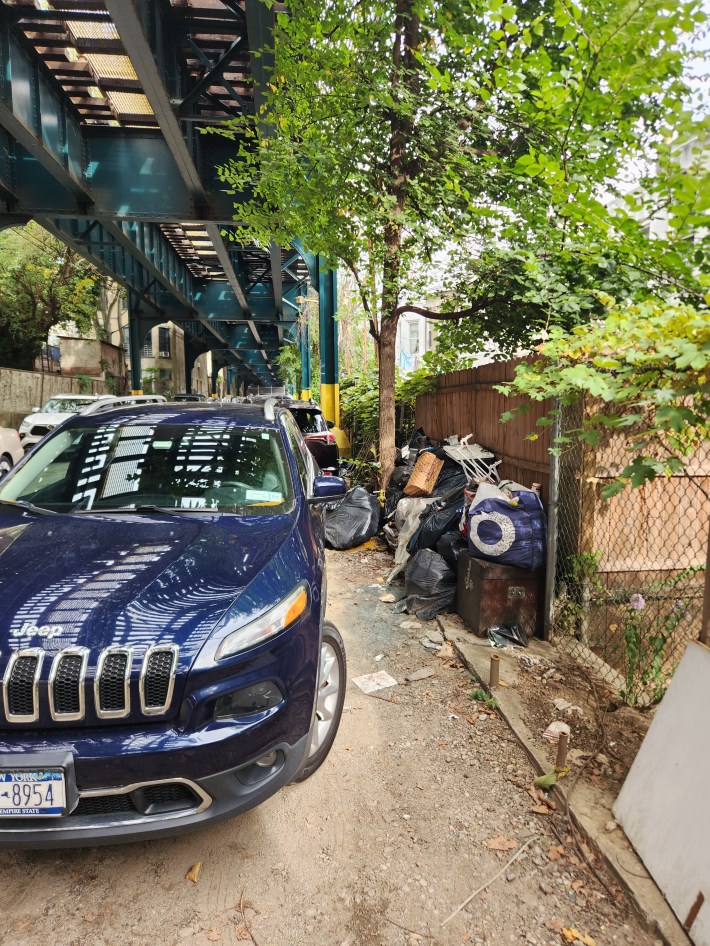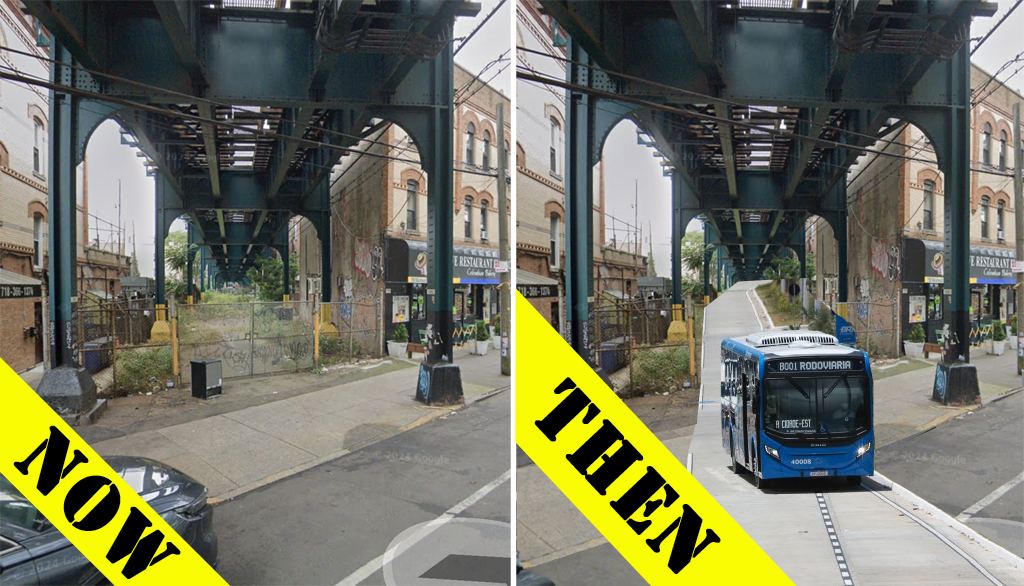It's another baby step towards better buses.
The MTA is making strides towards actually building the Ridgewood busway, a plan to turn a filthy private road underneath the elevated M train tracks into a gleaming bus-first corridor.
An MTA source told Streetsblog that the agency plans on doing some initial designs on the busway early in 2026 to figure out any of the possible challenges involved in converting the space under the tracks, but that the agency is interested in working on the project with the Department of Transportation.
"We think the idea has potential and we’re looking forward to digging in further," the official said.

The proposed busway, which was first proposed in the 2015-2019 MTA capital plan and then quietly revived in 2020 as part of the Brooklyn bus network redesign, would run for about .5 miles beneath the elevated M train tracks between Fresh Pond Road and Palmetto Street. The area underneath a pair of train tracks is wide enough to fit two lanes of parked cars, so presumably would be able to fit two-way bus traffic.
Unlike busways that require the MTA and DOT to negotiate about converting street space used by private vehicles and buses, the MTA owns most of the stretch under the tracks. However, the agency would need to figure out what do to when the route crosses with pedestrian plazas at Forest Avenue and Woodward Avenue.
Currently, the area underneath the M train tracks is a makeshift parking lot for MTA employees that's supposed to be closed by a locked gate, but the gate is left open more often than not, which residents say invites illegal dumping. So in addition to improving service on the Q58, B13 and B20 buses, converting the space under the tracks into a busway could also take care of the persistent garbage issues in the area.
Ridgewood resident Eric Treffeisen told Streetsblog that he's been making complaints about illegal dumping underneath the tracks since 2018, to no avail.
"The gate gets left unlocked 24/7 and it's just getting used for parking all the time," said Treffeisen. "With the gate left unlocked, there's also a bunch of illegal dumping that goes on. Things just accumulate and pile up. It's also kind of in this city agency gray zone of sorts, where 311 doesn't really address it because they say, ‘no, inside the gate is the MTA property.'"

Treffeisen said that the irregular nature of the parking lot contributes to the fact that it's so rarely cleaned up, and saw the busway idea as a better use of the space.
"It's probably a better use of the space than just kind of having it as a parking lot. So I guess in that sense, I'm generally in favor of it," he said.
The MTA downplayed the busway in 2020, calling its inclusion in the report the work of a "well-meaning and well-intentioned bus planner," but that was during an era when the agency was less aggressive about a push for bus priority projects around the city. With the success of the 14th Street busway and the subsequent introduction of bus-only stretches of road around the city, the MTA has come to see the wisdom in clearing the way for buses.
The agency included an evaluation of the Ridgewood busway in the 20-Year Needs Assessment it released in 2024. Capital planners determined the project would cost about $30 million, save bus riders about two minutes per trip and provide service improvements to multiple bus lines. The busway would also improve street safety in the area by taking buses off the local street grid.
The agency ultimately concluded that the busway proposal "performs well in cost effectiveness due to operational savings and a relatively low cost to implement. This is a small project, but its positive impacts go beyond the immediate geographic region of the project and benefit riders on multiple bus routes that would become more reliable and operationally efficient."
A spokesperson for the city DOT said the agency had nothing to add at the moment.
— with Sophia Lebowitz






